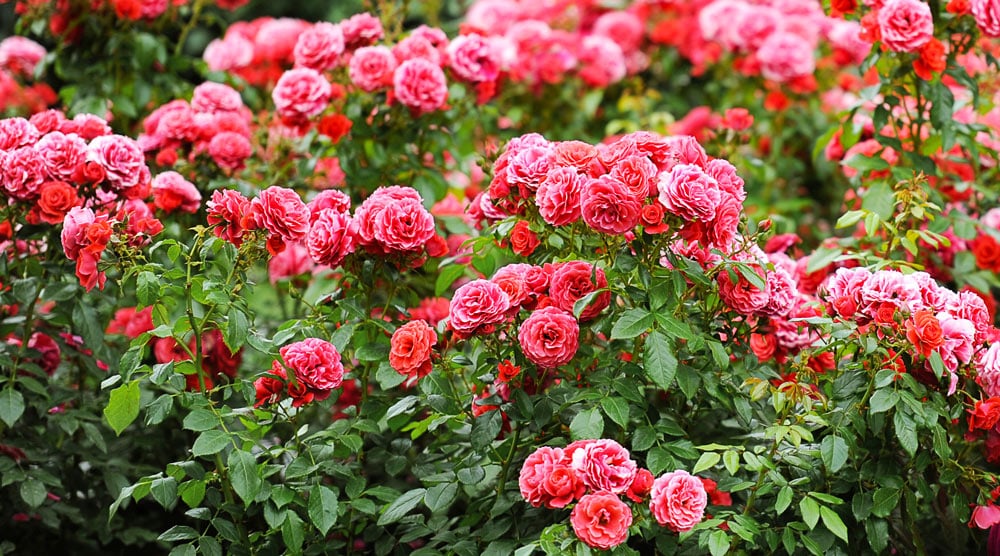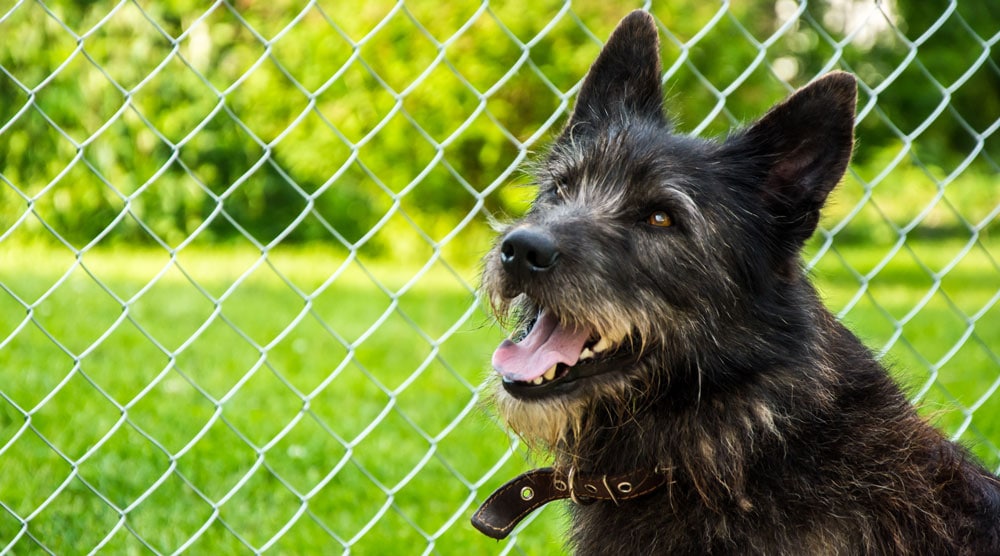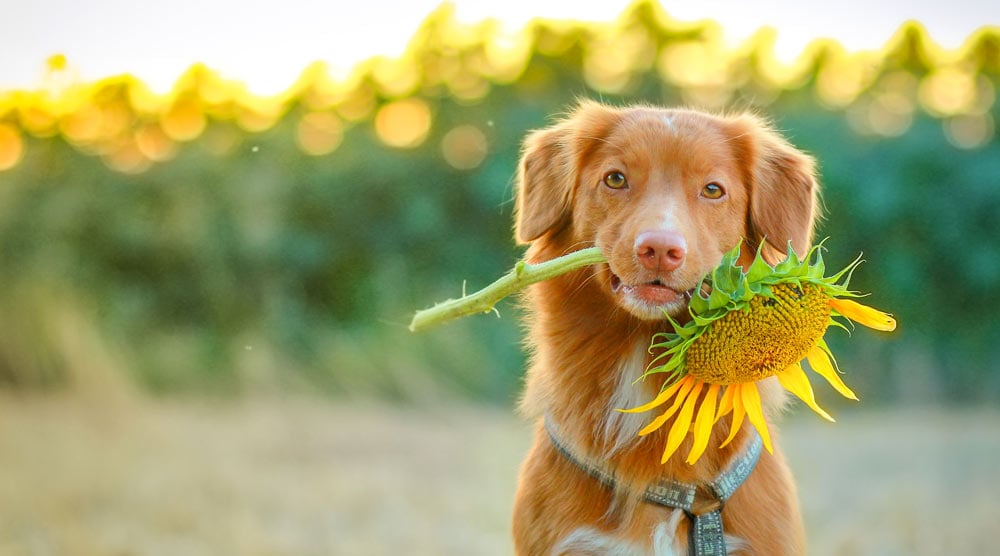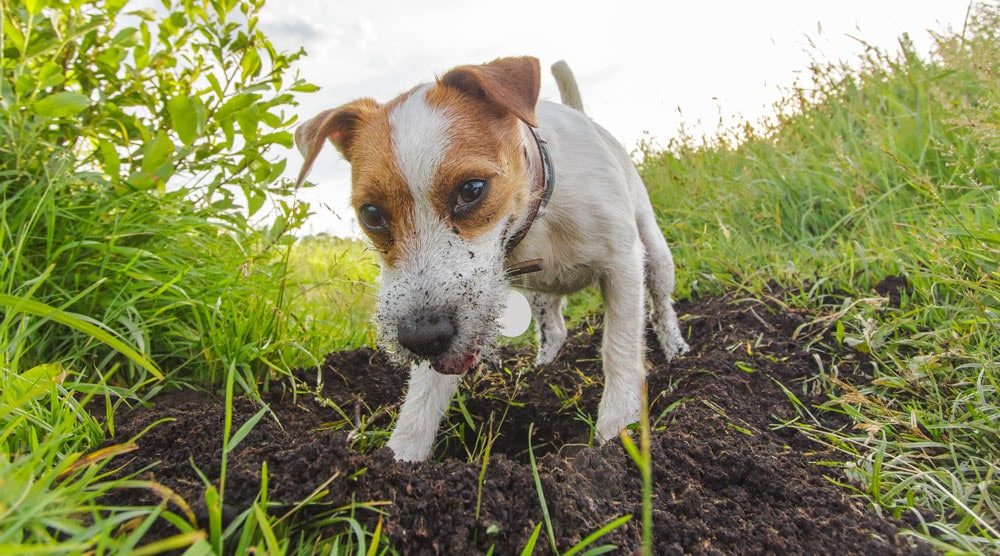The good news is that roses are not poisonous to dogs. Eating a small amount of rose petals or foliage isn’t likely to cause medical problems for your pet.
This doesn’t mean roses are safe for dogs though. The thorns can be very dangerous, especially if they catch the eyes or mouth. Eating too many rose leaves could also lead to an upset stomach.
With the help of veterinary surgeon Dr Linda Simon, let’s take a closer look at whether roses are poisonous for dogs and how to protect your pet.
Contents
Roses Are Not Toxic to Dogs
All parts of true rose species are non-toxic to dogs. This means that if your dog eats a few petals or leaves, it shouldn’t be a cause for concern.
It also means roses are a popular choice for pet-safe gardens!
Be careful to check that the plant is a true rose though. Some toxic plants have the word Rose in their botanical name, but are not part of the rose family. Look for plants that contain the name Rosa, as this is the family name for true roses.
Are There Other Dangers to Roses?
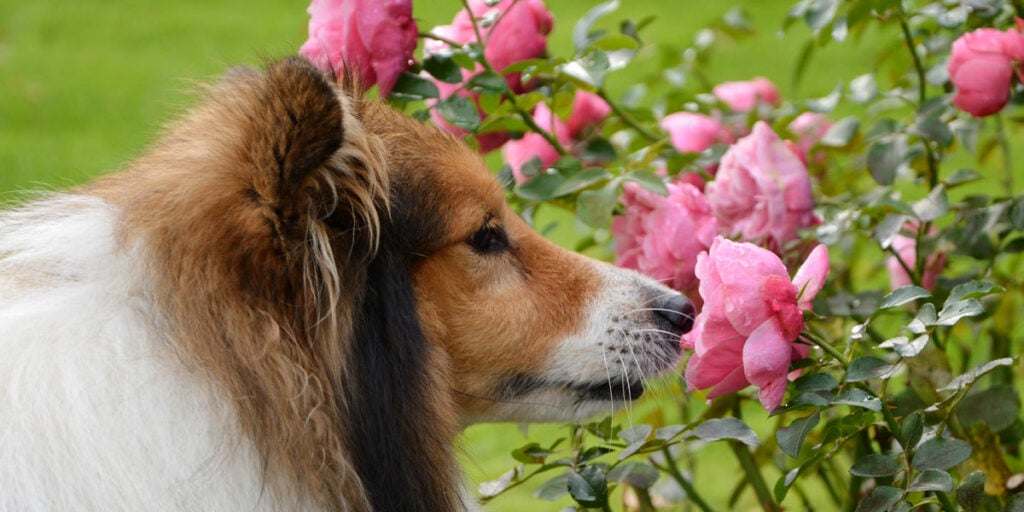
While roses are non-toxic to dogs, that doesn’t mean they are completely safe. Some potential dangers of rose plants include:
- Stomach upset. Roses are non-toxic, but they are also inedible. If your dog eats too many leaves, stems, or petals, they may get a stomach upset. Contact a vet if your dog has eaten roses and is showing signs of discomfort or illness.
- Eye damage. Rose thorns can cause serious wounds to the eye, leading to symptoms such as redness, watering, pain, squinting, and even permanent vision loss. “A suspected thorn in the eye is an emergency could even rupture the eyeball,” says veterinary surgeon Dr Linda Simon. “If the thorn remains in the eye, owners should never be tempted to remove it; instead, head straight to your local vet where it can be removed safely.” Even small abrasions can create corneal ulcers that can become serious without treatment.
- Thorn scratches. Thorns can also cause deep skin wounds, which may become infected if left untreated. It’s also common for thorns from rose cuttings to become lodged in a dog’s paw pads. “Thorns and grass seeds are the two most common things I remove from dog’s pads” says Dr Simon. “The longer they are left, the more they ‘burrow’ into the skin. Bringing your pooch for prompt treatment is wise.”
- Pesticide poisoning. Many dangerous pesticides, fertilizers, and other chemicals are used on roses. Always check whether a rose has been treated with chemicals before buying. If this isn’t possible, keep your dog away from the plant for several weeks to be safe.
How to Keep Your Dog Safe Around Roses
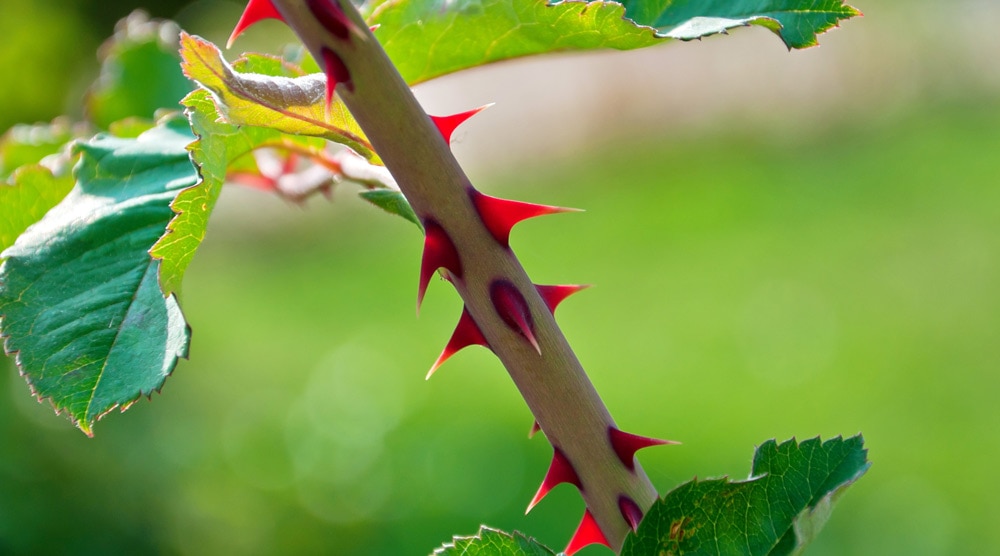
Planning a dog-safe garden is the best way to keep your dog safe around roses. For example, there are several roses with few or no thorns, making them a safer choice for dogs. Two examples of spike-free varieties include the miniature Cinderella Rose and the Kathleen Harrop.
Avoid fertilizing your roses with potentially toxic chemicals. For example, disulfoton is often contained in rose granules, but is highly toxic if ingested by dogs. Many other rose fertilizers are toxic to dogs, including cocoa mulch.
It’s also important to clear away cuttings after pruning a rose bush. Otherwise, the stems dry out and create inflexible thorns, which could be even more painful for your dog to walk on.
Other tips for keeping dogs safe around roses include:
- Supervise your dog in the garden and block access to rose bushes.
- Tie up climbing roses so they don’t trail on walkways.
- Provide interactive treat toys, a dog-friendly sandbox, or a sensory garden area to keep your pet mentally stimulated.
If you suspect your dog has trodden on a rose bush stem, check they haven’t damaged their paw and that a thorn hasn’t become embedded in the pad. The longer it stays there, the greater the chance of an infection developing.
Summary
Roses are not poisonous to dogs. So, if your dog eats a few leaves or petals, there is probably nothing to worry about.
However, rose thorns can cause serious wounds, especially to the delicate eye area. Roses are also not edible, so your dog may suffer from an upset stomach if they eat too much. For more information about dogs and plants, you may want to read our guide to dog-safe flowers.
